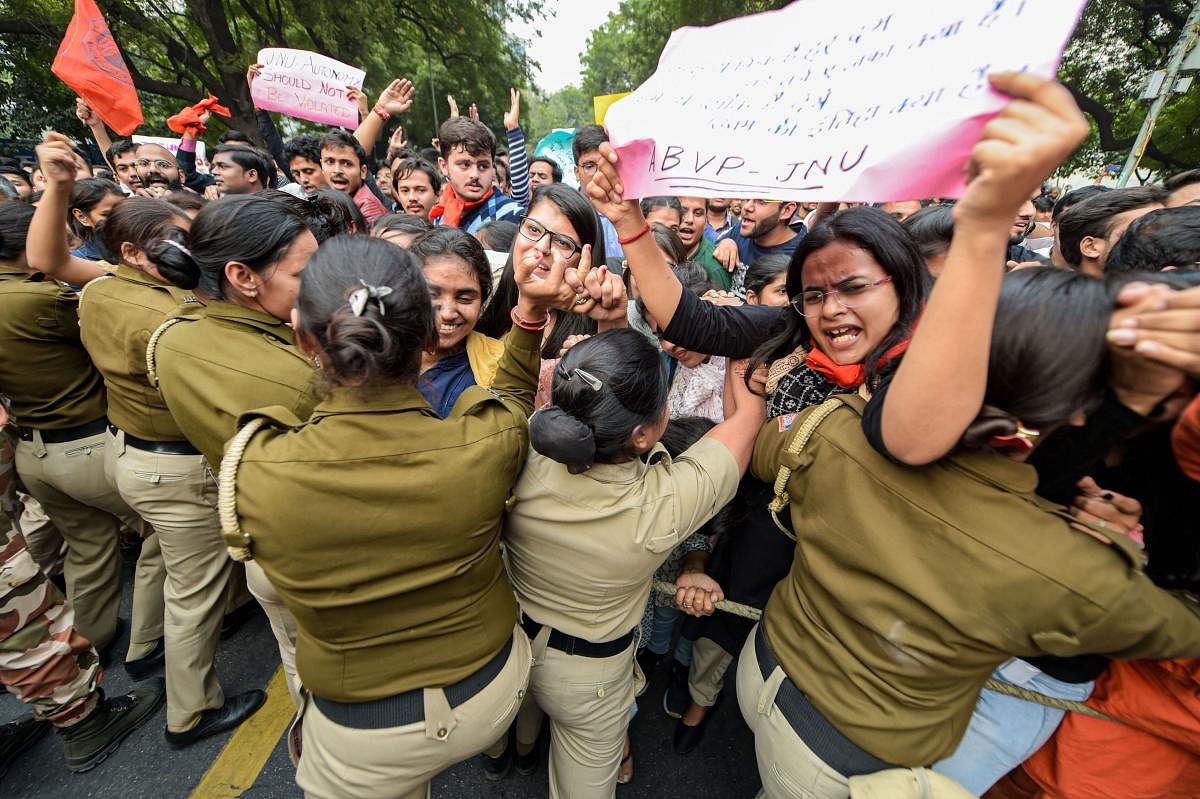
Last week, hundreds of Jawaharlal Nehru University (JNU) students went on protest against the recent fee hike decision by the university administration. The students alleged that the fee hike was an attempt to exclude students from marginalized and humble backgrounds from quality higher education. The protest became a hot topic of debate across media platforms. In recent times, the students of several public universities have gone on protest against fee hikes by their respective administrations. The issue of fee hike and students’ protest warrants a close scrutiny in order to understand the deeper malaise affecting the higher education system.
As a matter of fact, higher education in India has remained inadequately funded for a very long time. The last budget allocated only Rs 37,461 crore for the entire higher education sector, along with severe fund cuts for technical education institutions as well as the University Grants Commission. India’s central universities have been in a near-death comatose stage due to extreme administrative apathy, intellectual corruption, staff shortage and financial distress. This state of decay has been largely neglected by the public discourse although this multi-dimensional crisis affects the most significant demographic of Indian society. The country has seen a number of prestigious universities decline due to this neglect of issues affecting them. Universities like Patna University, Allahabad University which were once considered as prominent centers of knowledge and excellence have now lost their glory.
However, JNU has stood the test of time – so far. The university is one of the top-ranked universities in The Times world university rankings. It was ranked 96th in Asia and in the 601-800 ranking band worldwide. It was ranked No 3 among all universities in India by the National Institutional Ranking Framework of the Government of India in 2016 and No 2 in 2017. The university has also performed brilliantly in research output. As per the latest Scopus data, available for the year 2016, the number of publications from this university was 819 in 282 publications.
The fee hikes in numerous universities, including in the IITs, IIMs and National Law Universities (NLUs) raises grave concern as it make things worse for students from lower-income backgrounds in terms of loans, which means that those who need extra support to cover their living costs will have to leave university with the highest levels of debt. The higher fees basically price out the poor students from premier public universities.
Since the State has failed to deliver quality education to a large enough number of students, the private sector has tried to maximise its opportunity. In the last five years, the private education industry in the country has nearly doubled. Research shows that the Indian education sector, in terms of revenue, stood at $97.8 billion in 2016, and is projected to nearly double to $180 billion by next year. At the same time, government spending on education is declining steeply. It dropped from 1% of the country’s GDP in the Narendra Modi government’s first Budget in 2014-15 to 0.62% in 2017-18. Its share in the Budget has been slashed from 6.15% to 3.7%.
It is important to ask, how we can fulfill the constitutional commitment of transformative society when we fail to deliver quality education to the poorest students? What kind of transformation can be brought about when only the children of the rich can afford quality education and go on to contribute to the culture of favoritism and nepotism? This is antithetical to the State’s obligation to provide quality education, which has at its core the promise of social mobility and freedom from disadvantages and discrimination.
This assumes pronounced importance in an economic context in which, as per the leaked NSSO report, India’s unemployment numbers were at 6.1%, the highest in over four decades, in 2017-18, a situation that has not got any better since. In theory, college education improves employment prospects. But quality education is affordable only to few students. According to a recent report, over 80% of engineers lack skills and are unemployable. This is a warning bell for government and warrants its attention to provide affordable quality education.
If a majority of students are not able to afford quality education, the right to education granted under the Constitution will remain a mere slogan. In a number of judgements such as Unni Krishnan, JP and Ors vs State of Andhra Pradesh and Ors, and Mohini Jain vs State of Karnataka, the Supreme Court has emphasized the right to education as a fundamental right. And it is obvious that in the absence of affordable education, this right is meaningless. If there is no active implementation, mere recognition of the right within the textual framework of the Constitution is insufficient to actualize its aspirations for the people of India.
If we look at the global scenario, there are a number of countries that either provide highly subsided education or ensure that students are not denied quality education for want of money. Of the 36 developed, democratic countries that currently make up the Organization for Economic Cooperation and Development (OECD), seven of them subsidize tuition in public colleges and universities. About two dozen countries provide free tuition or nearly-free tuition at public colleges and universities to their citizens. If India aspires to become a global leader and play an important role on the world stage, the significance of access to education for citizens cannot be underestimated. It is time we looked at the student protests against fee hike as a response to a larger structural problem underlying our education system.
(The writers are students of the National Law School of India University, Bengaluru)